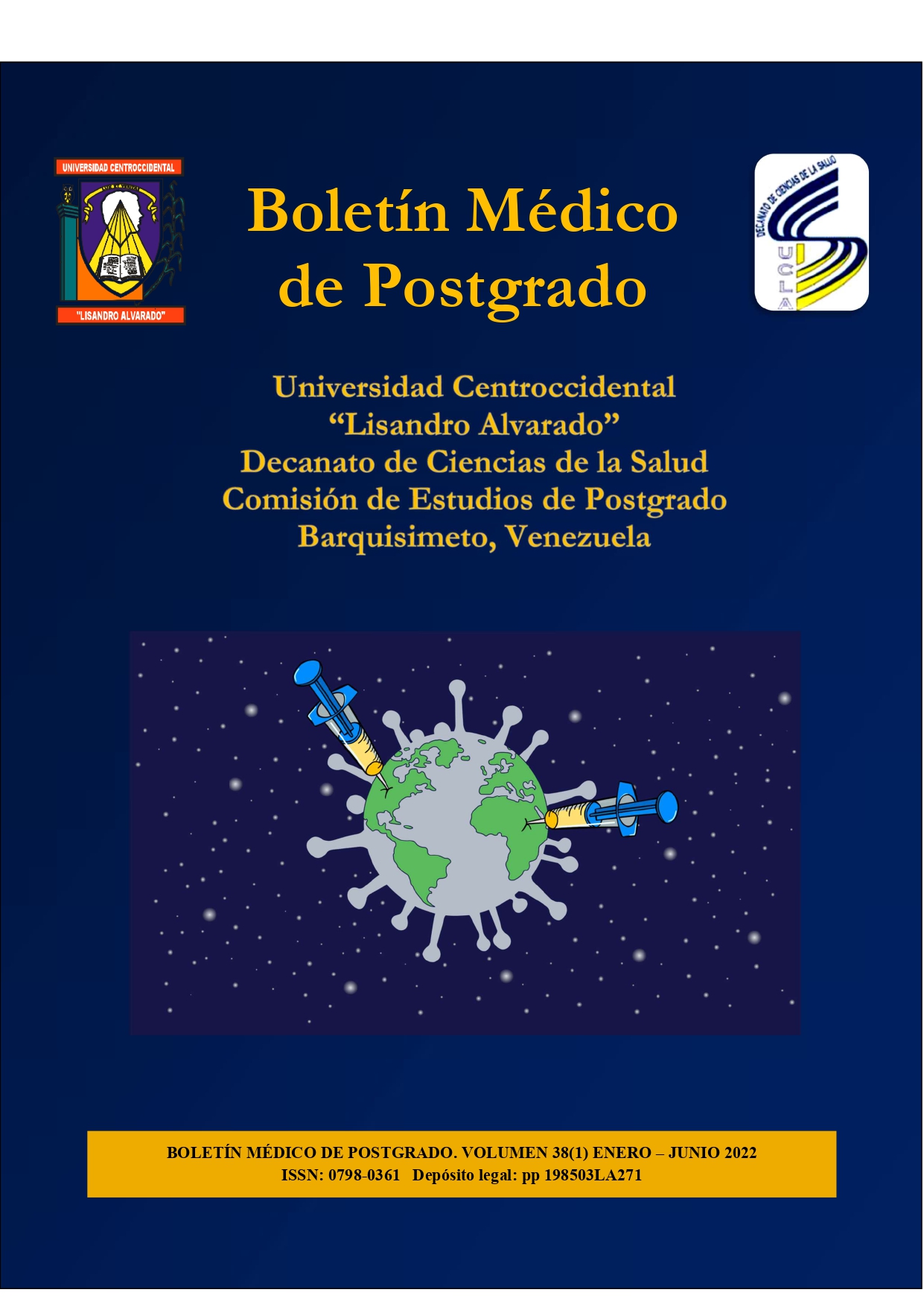Clinical and epidemiological features of community-acquired sepsis Hospital Central Universitario Dr. Antonio María Pineda
Keywords:
sepsis, medical records, anemia, arterial hypotension, tachycardiaAbstract
Community-acquired sepsis is a difficult syndrome to define, diagnose and treat. For this reason, a descriptive, cross-sectional study was carried out with the aim of describing the clinical and epidemiological features of patients with a diagnosis of community acquire sepsis admitted to the Internal Medicine Service of the Hospital Central Universitario Dr. Antonio Maria Pineda during the January-July 2019 period. 42 medical records were reviewed; the age group between the 46 and 75 years old represented 52% of the sample, 52% were male and 35% had several comorbidities. The main cause of sepsis was urinary tract infection (31%) followed by the mixed etiology in 28.6% individuals. Among paraclinical variables, 76.2% of the patients presented anemia and leukocytosis, 61.9% thrombocytopenia and 85.7% hyperazoemia. Regarding the hemodynamic variables, 66.7% showed tachycardia, 76.2%, tachypnea and arterial hypotension, 66.7% oxygen desaturation, 88% oliguria and 71.4% presented altered state of consciousness. Mixed organic dysfunction occurred in 83.3% of cases. 76.2% of patients died due to sepsis. Clinical and epidemiological data of community-acquired sepsis is a way to comprehend the behavior of this entity in order to carry out and adequate diagnosis and treatment and reduce the morbidity and mortality.
Downloads
References
American College of Chest Physicians/Society of Critical Care Medicine. Consensus Conference: definitions for sepsis and organ failure and guidelines for the use of innovative therapies in sepsis. Crit Care Med 1992; 20(6): 864-74.
Ochoa X, Cano A, Tapia E, López F, Pérez, G, Sánchez A, Montiel H. Validación de la nueva definición de sepsis en el servicio de urgencias. Anales Médicos 2018; 63(1): 6-13.
Peña L. Utilidad de la procalcitonina como predictor de severidad en pacientes con sepsis. Unidad de Agudos. Hospital Central Universitario Dr. Antonio María Pineda. BMP 2015; 31(3).
Yen-Jung Chen, Fu-Lun Chen, Jin-Hua Chen. Epidemiology of sepsis in Taiwan. Medicine 2019; 98:20.
Escobar J, Villegas S. Caracterización de los pacientes con diagnóstico de sepsis en una institución de tercer nivel del municipio de Pereira. Cultura del Cuidado 2011; 8(2): 38-45.
Mena-Ramírez J, Valdez-Euan J, Castro-Sansores C, Martínez-Díaz G. Análisis de supervivencia en pacientes con choque séptico en una Unidad de Cuidados Intensivos. Med Int Mex. 2014; 30(4): 399-406.
Carvajal J, Naranjo F, Ospina J. Caracterización de pacientes diagnosticados con sepsis en una unidad de cuidados intensivos de Bucaramanga, Colombia 2010-2011: estudio descriptivo. Arch Med (Col) 2016; 16(1): 53-60.
Published
How to Cite
Issue
Section

This work is licensed under a Creative Commons Attribution-NonCommercial-ShareAlike 4.0 International License.
Las opiniones expresadas por los autores no necesariamente reflejan la postura del editor de la publicación ni de la UCLA. Se autoriza la reproducción total o parcial de los textos aquí publicados, siempre y cuando se cite la fuente completa y la dirección electrónica de esta revista. Los autores(as) tienen el derecho de utilizar sus artículos para cualquier propósito siempre y cuando se realice sin fines de lucro. Los autores(as) pueden publicar en internet o cualquier otro medio la versión final aprobada de su trabajo, luego que esta ha sido publicada en esta revista.



